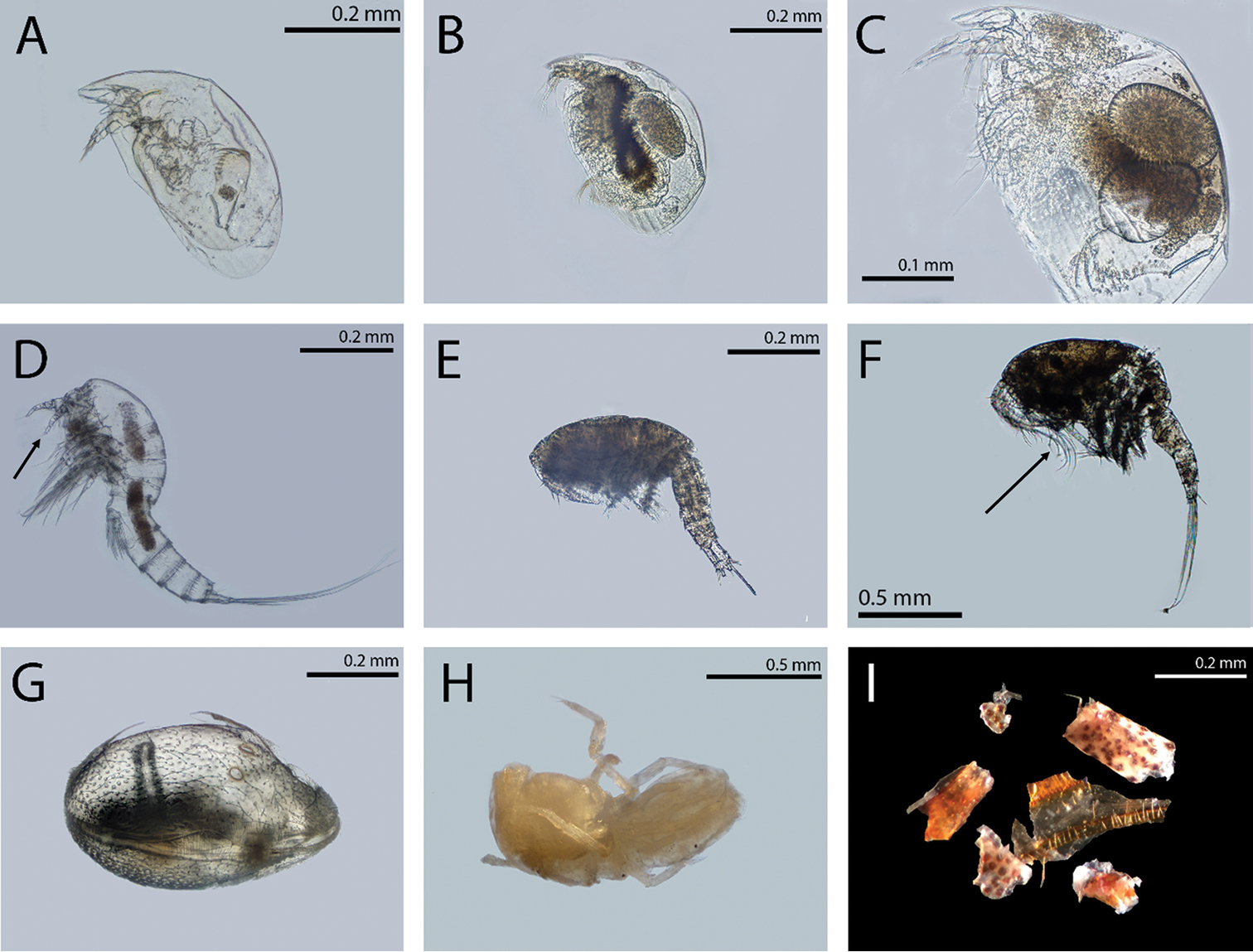
|
||
|
Gut contents of Pachón cave fry. A–CCladocera Water fleas. This species constituted by number the most encountered prey. On average, fry had in their guts 9.3 individuals of this species DHarpacticoida copepod. Arrow highlights the short antennae diagnostic of class Harpacticoida. This species constituted by number the second most encountered prey. On average, fry had in their guts 4.7 individuals of this species E–F Copepods. Arrow highlights the long antennae diagnostic of non-harpacticoida copepods G Ostracod. This and possibly two more species of ostracods were in their guts H Isopod. While only one specimen was eaten, due to its large size it constitutes a large stomach content by volume I Sclerites of arthropods, possibly of insects. Contrary to all of the above, they have pigment, suggesting that some may be surface insects. Some may be a by-product of eating guano from insectivorous bats. |